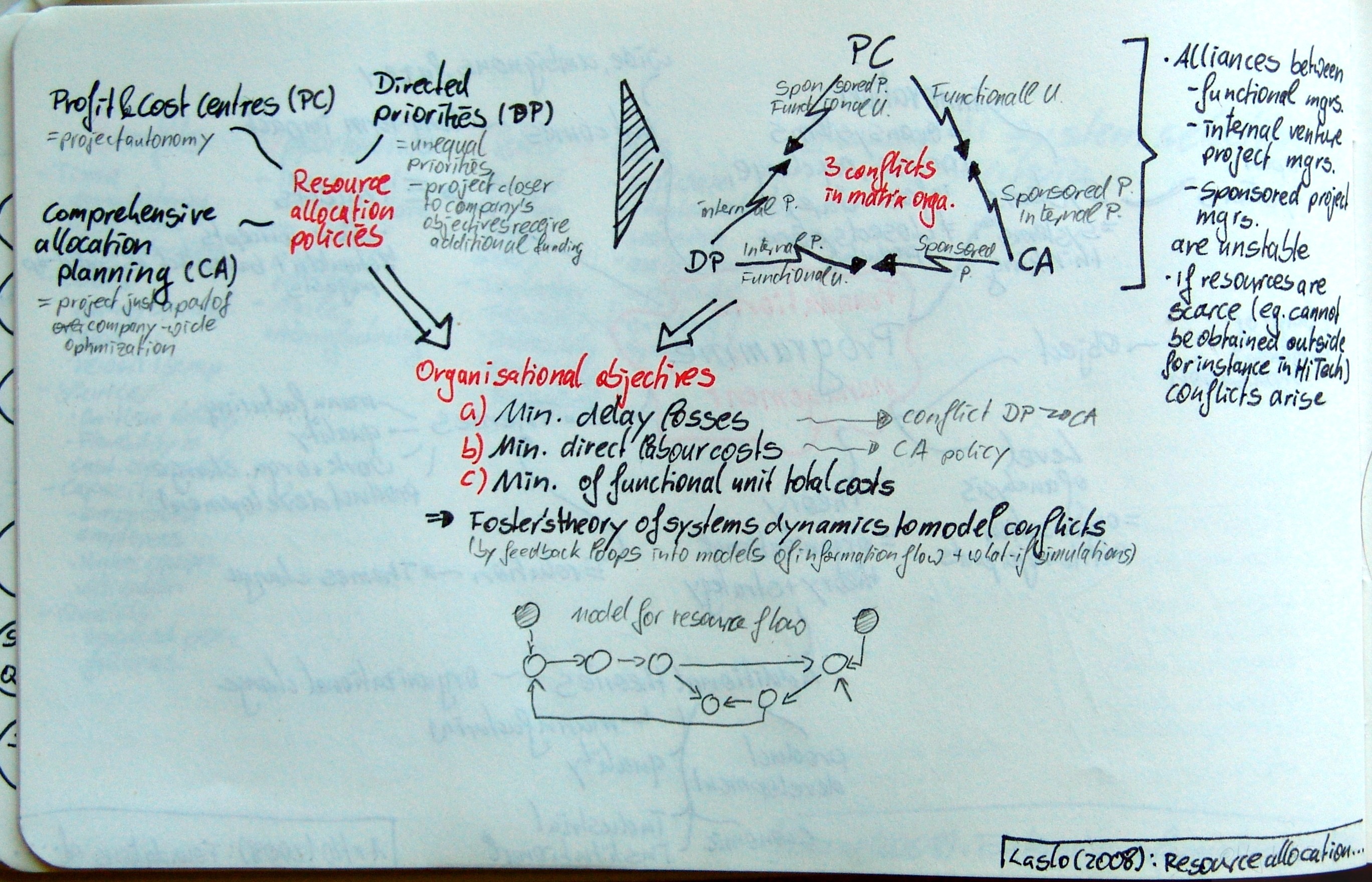Laslo, Zohar; Goldberg, Albert I.: Resource allocation under uncertainty in a multi-project matrix environment: Is organizational conflict inevitable?; in: International Journal of Project Management, Article in Press (2008).
http://dx.doi.org/10.1016/j.ijproman.2007.10.003
Laslo & Goldberg investigate the conflicts associated with resource allocation. They find that the matrix structure has become the organisational from to go for, when it comes to efficiently managing a multi-project firm. Unfortunately the matrix structure has been criticised (see the PMBOK Guide) to inherently spark conflicts between line and project managers about resources. In a mulit-project firm, the authors conclude, this drawback is even worsened by the resource allocation fights between projects.
In order to model the problem Laslo & Goldberg analyse the three most common resource allocation policies, which are (1) Profit & Cost Centres (PC), (2) Comprehensive Allocation Planning (CA), and (3) Directed Priorities (DP). Profit & cost centre are synonymous with the maximum project autonomy. In comprehensive allocation planning each inidvidual project is only part of an organisation wide optimisation of resource allocation. Thirdly, in the policy of directed priorities, projects whose objectives are closer to the organisation’s strategic goals receive addtional resources/funding.
As often claimed 3 types of conflict are inherent in the matrix structure, when managers would fight for the right policy.
(1) DP vs. PC – internal Project would favour DP, whilst sponsored projects and functional units favouring PC
(2) PC vs. CA – functional units favouring PC, whilst sponsored and internal projects favour CA
(3) DP vs. CA – internal projects and functional units favour DP, whilst sponsored project favour CA
Using Foster’s theory of systems dynamics, the authors model these conflicts as a resource flow. The model contains feedback loops to model information flow into planning and runs several what if simulations.
In order to simulate with the model three organisational objectives are defined
a) Minimise delay losses (conflict DP vs. CA)
b) Minimise direct labour costs (favouring CA policy)
c) Minimise functional unit total costs (favouring PC)
As the authors put it: „Findings from the simulation suggest that not all conflict is realistic. For some project objectives, higher organizational performance can be achieved when managers learn that they have no basic differences in real interests and they can agree upon a resource allocation policy.“ That said, the results also show, that alliances between functional managers, internal venture project managers, and sponsored project managers are unstable. If resource scarcity comes into the equation, e.g, if resources can not be obtained externally, conflicts arise for sure.
